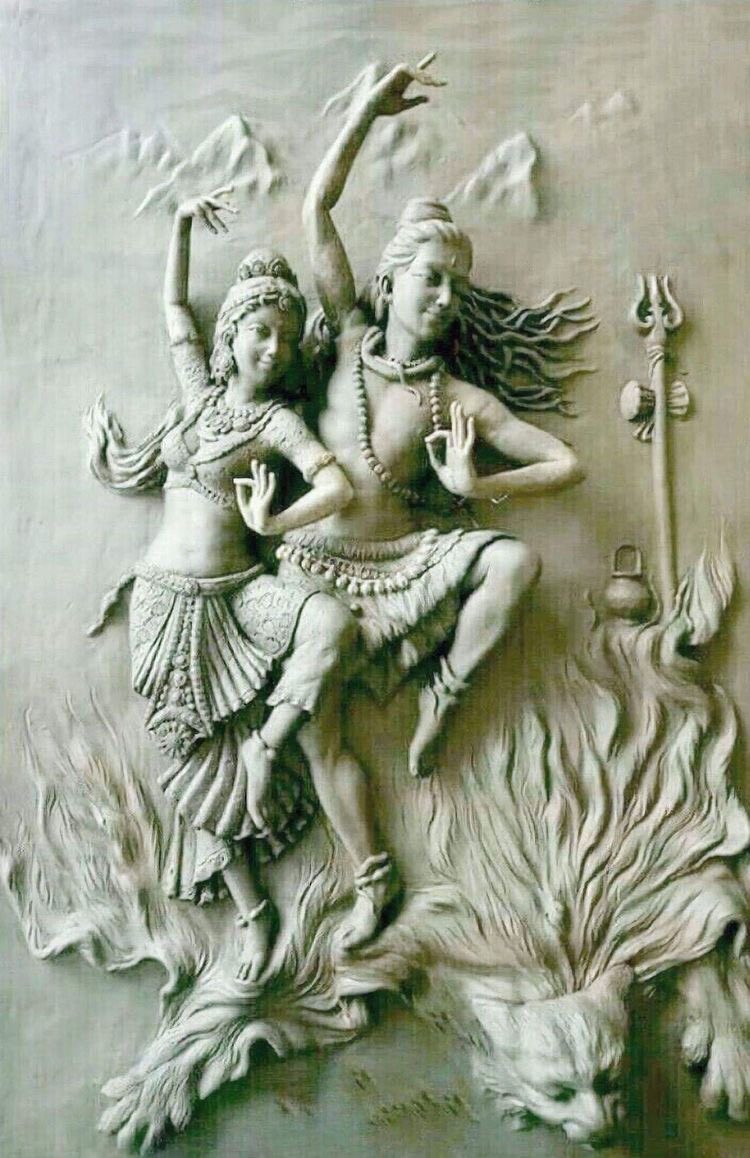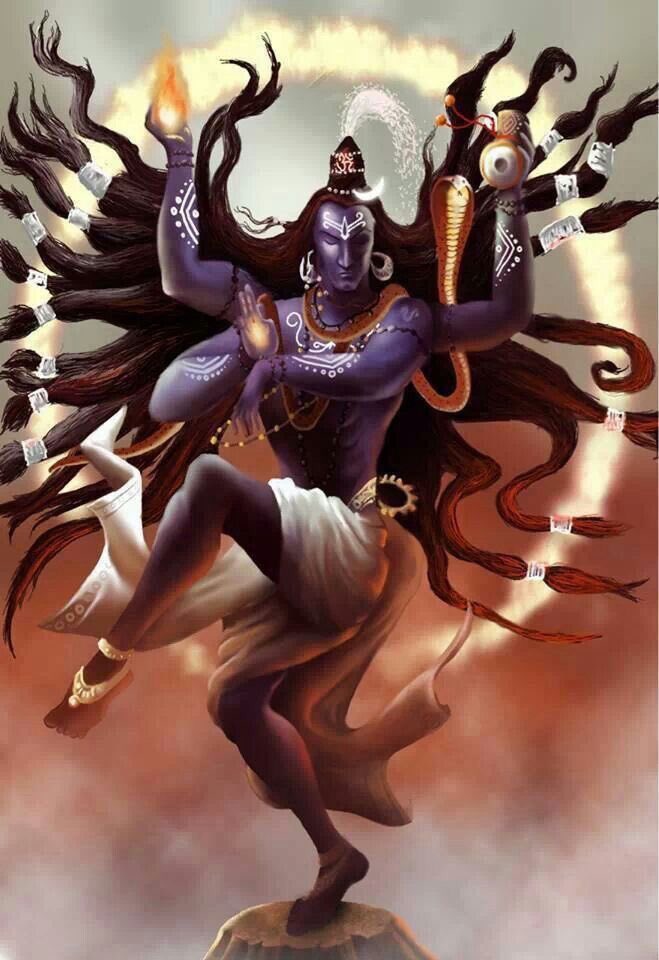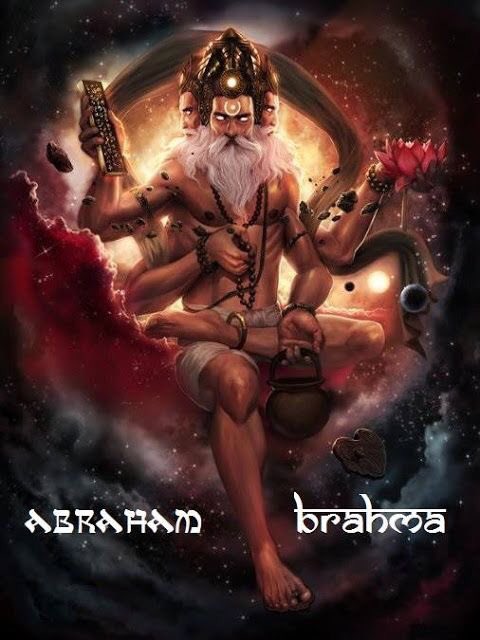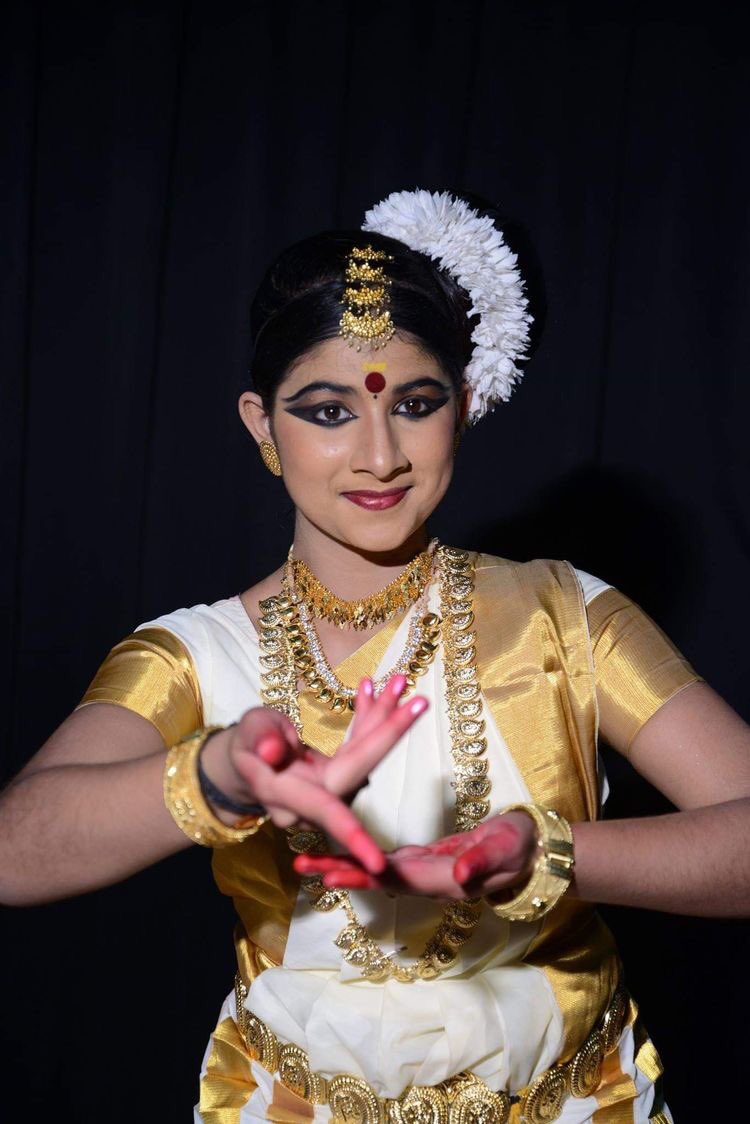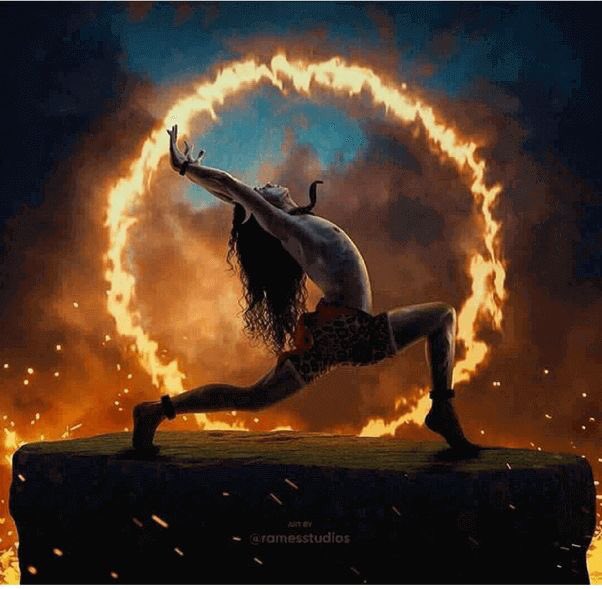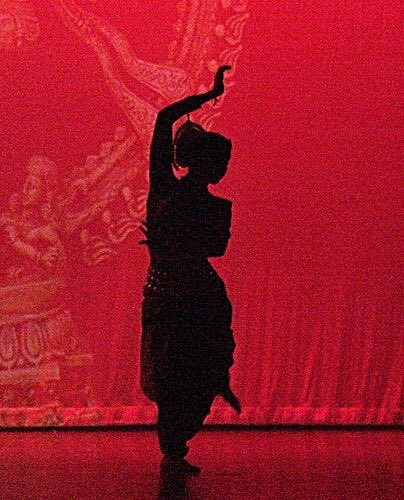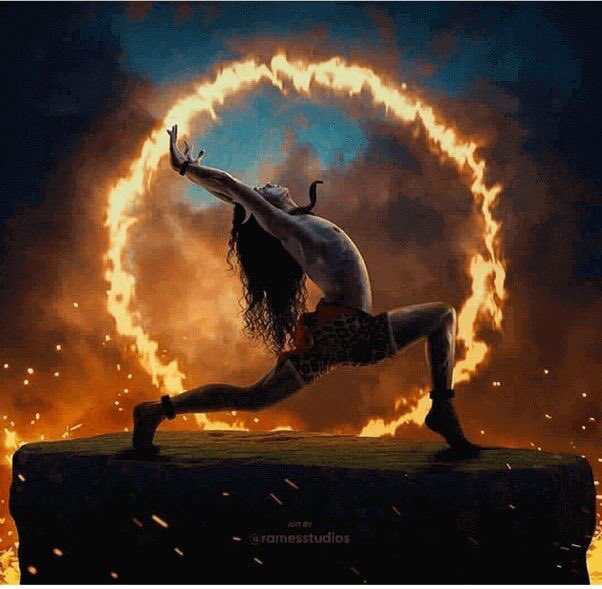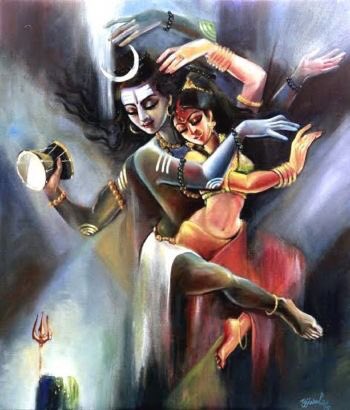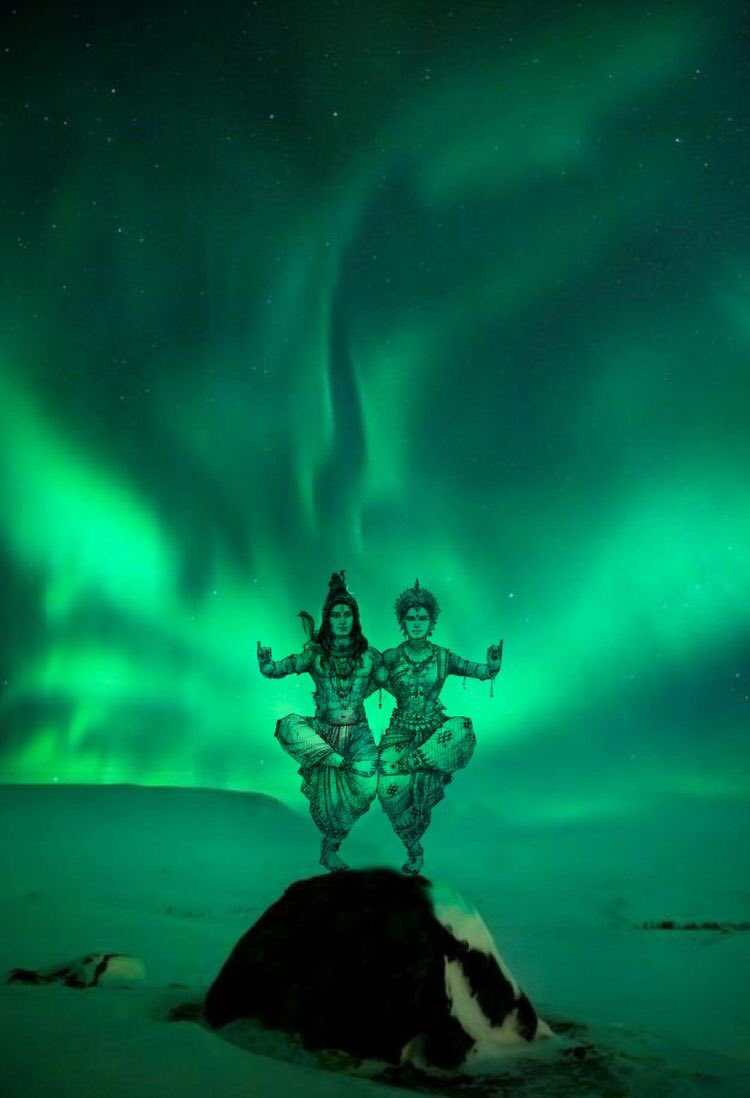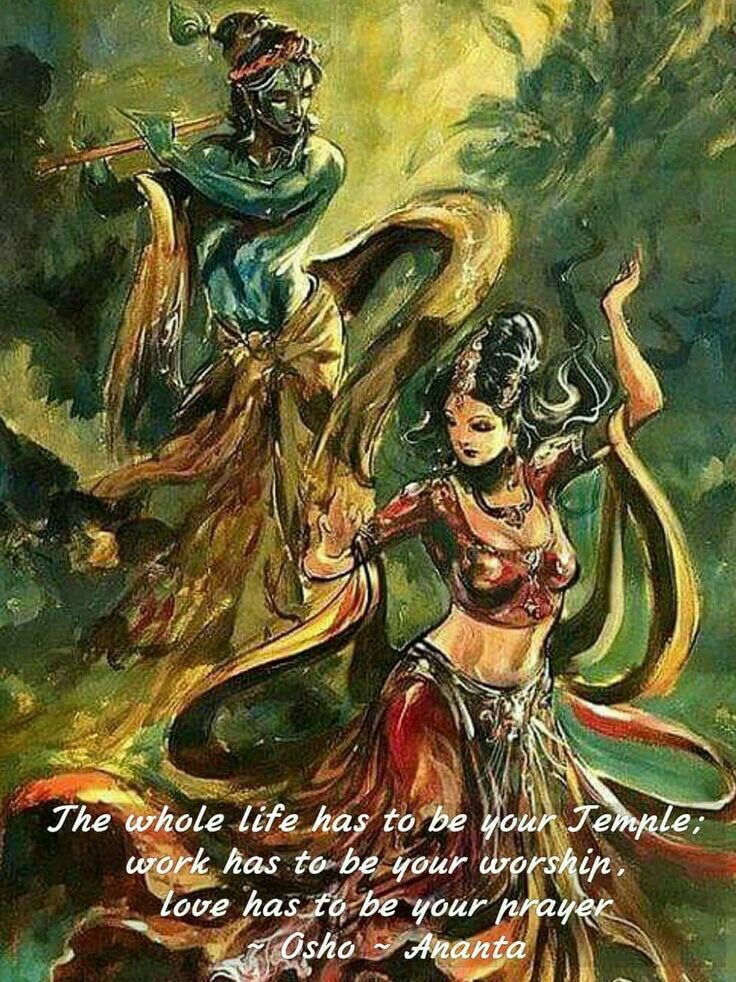#Thread on TANDAV (तांडव)
Whenever we read or hear the word ‘Tandav’, we associate it with ‘angry shiva’ or ‘dancing shiva’. However tandav refers to a form of dance or lets just say the divine dance, performed by any god or goddess.
Whenever we read or hear the word ‘Tandav’, we associate it with ‘angry shiva’ or ‘dancing shiva’. However tandav refers to a form of dance or lets just say the divine dance, performed by any god or goddess.
The reason for its association with shiva is because Shiva in the form of & #39;Nataraja& #39; is considered the supreme lord of dance. Secondly, The Tandava takes its name from & #39;Tandu& #39;, the attendant of Lord Shiva, who instructed Bharata to compile his book the Natya shastra.
Actually, Lord Brahma created a text, Natyaveda, an essence of the other 4 vedas. It is believed that he has taken pathya (words) form rigved, abhinaya (gesture) from the Yajurved, geet (music) from Samaved & rasa (sentiment & emotional element) from Atharvaved to form Natyaveda.
After creating this natyaveda, Brahma gave it to sage Bharata & asked him to spread it on earth. Following the words of brahma, Bharata wrote Natyashastra or the Science of Dramaturgy, a great, comprehensive work on the science and technique of Indian drama, dance and music.
The dance is a pictorial allegory of the 5 principal manifestations of eternal energy:
& #39;Srishti& #39; (सृष्टि) - creation, evolution
& #39;Sthiti& #39; (स्थिति) - preservation, support
& #39;Samhara& #39; (संहार) - destruction, evolution
& #39;Tirobhava& #39; (तिरोभाव) - illusion
& #39;Anugraha& #39; (अनुग्रह) - release,
& #39;Srishti& #39; (सृष्टि) - creation, evolution
& #39;Sthiti& #39; (स्थिति) - preservation, support
& #39;Samhara& #39; (संहार) - destruction, evolution
& #39;Tirobhava& #39; (तिरोभाव) - illusion
& #39;Anugraha& #39; (अनुग्रह) - release,
Thus Tandava symbolizes the cosmic cycles of creation and destruction, as well as the daily rhythm of birth and death.
It is believed that Lord Shiva is the king of all dancers. He was an expert in the thandava style of dancing.
It is believed that Lord Shiva is the king of all dancers. He was an expert in the thandava style of dancing.
The Tandava performed with joy is called Ananda Tandava which leads to the creation. Other one is that which is performed in violent mood called Rudra Tandava. It is performed during the destruction phase.
The other types of tandava identified are Tripura Tandava, Sandhya Tandava, Samara Tandava, Kaali Tandava, Uma Tandava and Gauri Tandava, lasya tandava.
Apart from it, The dance performed by Shiva& #39;s wife Parvati in response to Shiva& #39;s Tandava is known as Lasya.
Apart from it, The dance performed by Shiva& #39;s wife Parvati in response to Shiva& #39;s Tandava is known as Lasya.
In lasya the movements are gentle, graceful and sometimes erotic. ‘Lasya / ऱास्य means a tender or graceful dance. The main root of the word is ‘las’, ‘lasati’, ‘iti Lasya’. This means the one that is radiant, shining and feminine, that is lasya.
Other than that, Bhagavata Purana, mentions about Krishna dancing on the hood of Kaliya (a naag). It is also a kind of tandava.
According to Wikipedia:
“Author Angana Jhaveri describes Krishna Tandava in the Raslila has very spritely and joyful dance movements.
According to Wikipedia:
“Author Angana Jhaveri describes Krishna Tandava in the Raslila has very spritely and joyful dance movements.
It involves small quick movements, light springly jumps, fast footwork, spinning at a dizzy speed and some acrobatic movements”.
Know more about the raslila: https://twitter.com/anshulspiritual/status/1297881714383962116">https://twitter.com/anshulspi...
Know more about the raslila: https://twitter.com/anshulspiritual/status/1297881714383962116">https://twitter.com/anshulspi...

 Read on Twitter
Read on Twitter